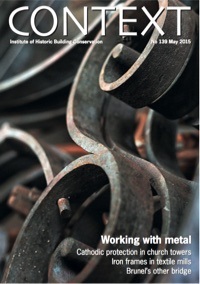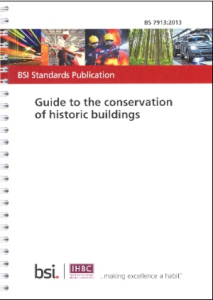With plaudits and congratulations all offered to the Branch organisers, supporters, sponsors, speakers and exhibitors at the IHBC’s 2015 Norwich, and further details to come on its CPD success through analysis supported by Historic England, IHBC’s national officers offer resounding congratulations to all involved, and look forward to Worcester 2016!
IHBC President Trefor Thorpe said: ‘I was hugely impressed with the enthusiasm and interest coming from our delegates, organisers and the wide range of speakers, sponsors and exhibitors in Norwich this year. All seemed most taken by the whole programme – from the chance to learn about the diversity of our heritage to the opportunities to network, and even to contribute to our presence on social media. It is a sign of a living, vibrant, and rapidly evolving organisation, which is just what we need as we all confront what one speaker identified as the economic ‘cold winter’ coming in the support for heritage conservation.’
‘Our Branch volunteers and conference speakers and leaders, as well as all others along in Norwich, demonstrated well just how working together – imaginatively and with a positive attitude – is the best way to respond to any ‘cold winter’.’
‘Our new governance developments, progressing under the ‘IHBC+’ programme, were a further demonstration of that ‘IHBC attitude’, though for more updates on our new governance and the AGM, I’m afraid you’ll have to wait for our forthcoming membership Eletter, as that will carry the full details.’
IHBC Chair Mike Brown said: ‘For the Chair of any organisation, there can be few things more satisfying than seeing its members and supporters pull together at critical moments – annual conferences, AGMs, challenging governance developments and the like. Over last weekend the IHBC faced all three, and our staff, volunteers, members and supporters all responded with a dedication and spirit far above the call of duty – self-imposed, as is the case for volunteers, or otherwise. I was hugely impressed by it all, but given my experience of the IHBC to date, not at all surprised.’
‘So I would like to echo the thanks and admiration of our President to all involved with our 2015 School and the associated programmes of AGM and our Council+ meeting on the Sunday. In particular I would like to offer my warmest gratitude to the Branch as a whole, and to the organising committee and our own staff, for raising the bar yet again in showing how we deliver cost-effective, quality training to our members and their colleagues.’
IHBC Education Secretary David McDonald said: ‘As a regular visitor to the Annual School, my expectations are not only that there will be something new to learn, but also that I will be inspired. Norwich has fulfilled both these expectations admirably. From Jonathan Foyle’s thought provoking words on cultural heritage to the ‘sharp end’ experience of Darren Baker in providing training in traditional construction skills there was much to learn. The Day School, along with the tours on Thursday and Saturday gave the delegates an exemplary CPD experience.’
‘Informal feedback on the CPD value of the School programme has been very positive, so I’m really looking forward to hearing the detailed analysis to come from the online survey and the internal analysis of CPD values that Historic England is kind enough to support.’
‘So, for any there, please be sure to fill in the feedback survey as that’s the best way to help us make 2016, and Worcester, and match to 2015 and Norwich!’
Bob Kindred, Chair of the Gus Astley Student Award Trustees said: I was delighted see five of the nominees for the 8th annual Awards at the Norwich School. It was an honour to be able to introduce and showcase this year’s outstanding submissions and I am indebted to our guest judge Professor Jukka Jokilehto who had no easy task in selecting the winner, which was Sarah Hendricks of Cambridge University for her dissertation ‘Spaces for Secular Music Performance in Seventeenth-Century England’. I was also pleased to see several past Award recipients at the School and it is greatly encouraging to learn that participation in the Awards has assisted them in furthering their careers.
The prestige of these Awards grows from year to year and I look forward to seeing the submissions for the 2015 Gus Astley Student Awards – the closing date for which is 31st July – and promoting the results at the Annual School in Worcester next year.
For a reminder of the School programme, supporters such as Historic England, speakers, sponsors and exhibitors see our forthcoming School issue of Context, and Norwich2015
Gus Astley Award winners for this year
Background to Council+
 The latest issue of the IHBC’s journal Context has been circulated to members, No 139, on metals and featuring discussions on repair and conservation as well as a range of projects on different types of historic structures.
The latest issue of the IHBC’s journal Context has been circulated to members, No 139, on metals and featuring discussions on repair and conservation as well as a range of projects on different types of historic structures.



